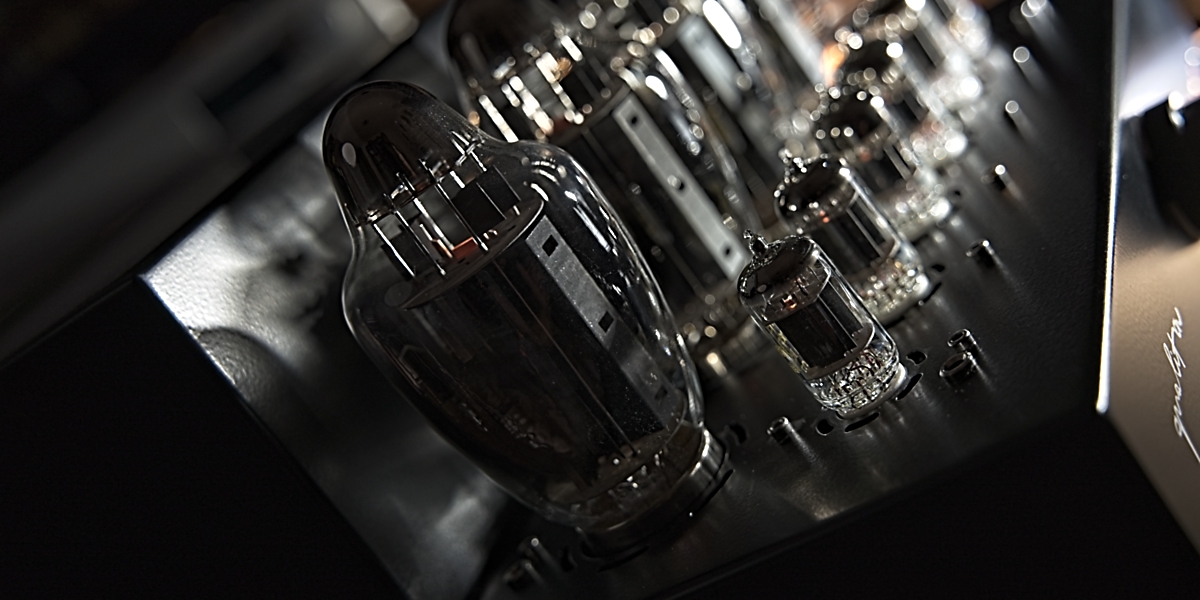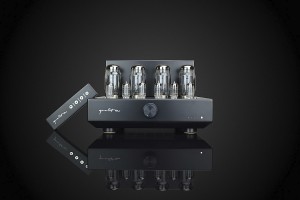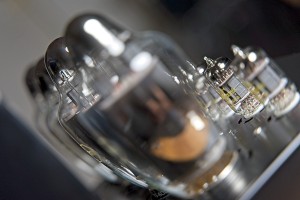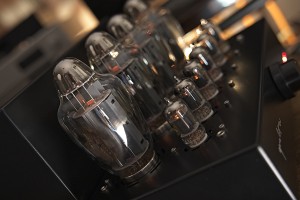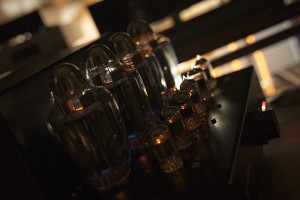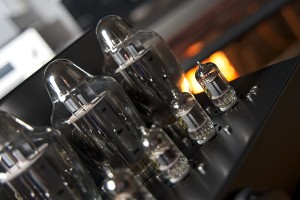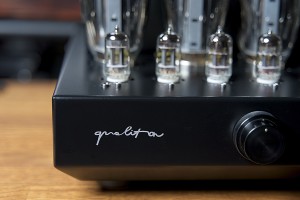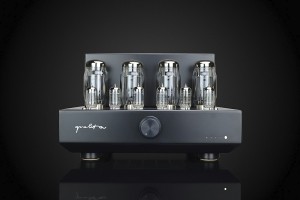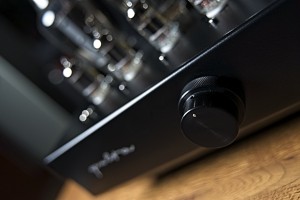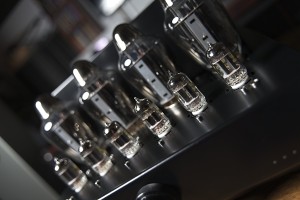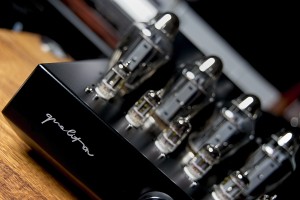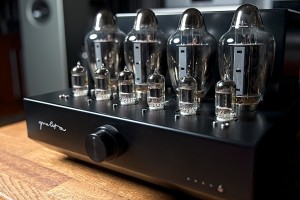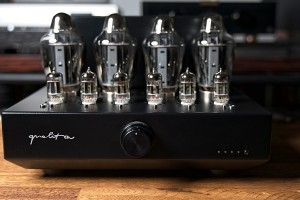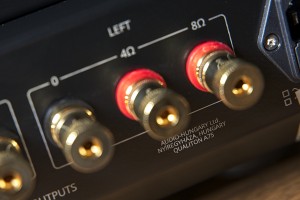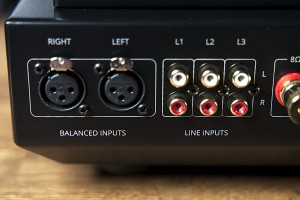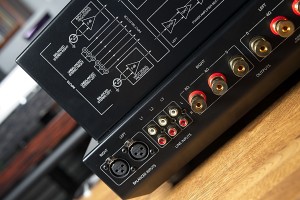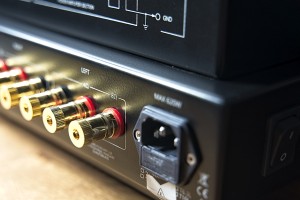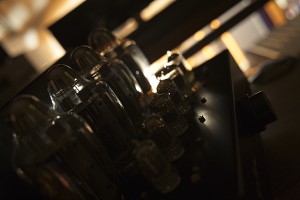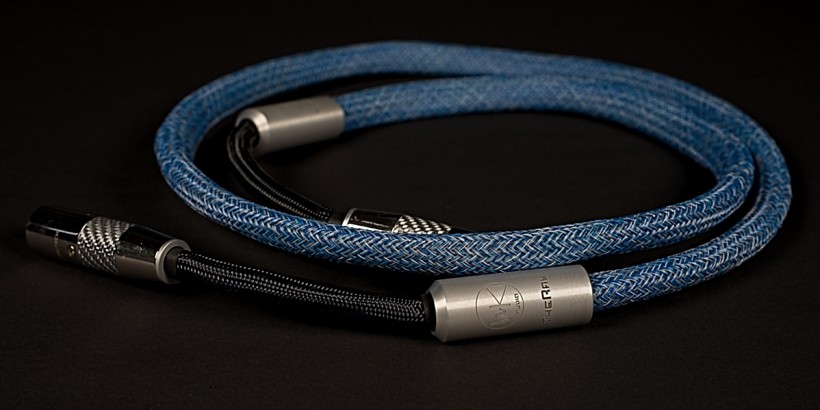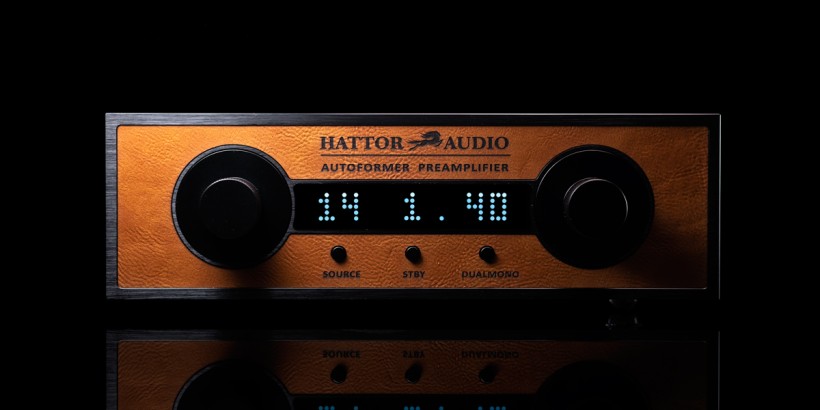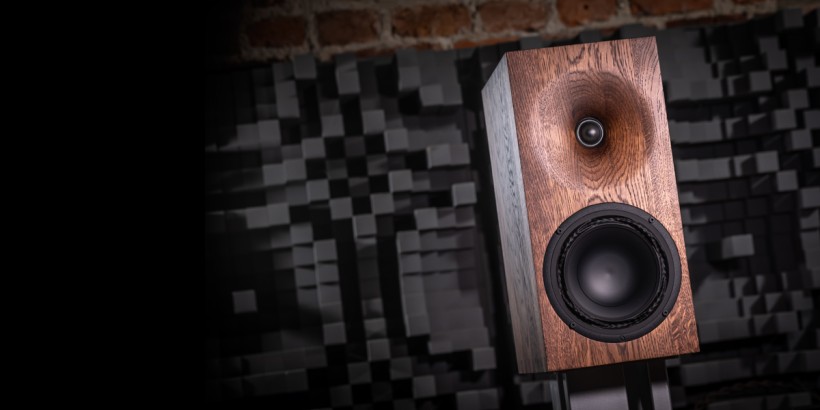A not-too-big, sleek tube integrated amplifier offering enough power to drive most speakers, and a bonus feature allowing users to use various tube types. All that for a reasonable price – can it be done? The makers of the Audio Hungary Qualiton A75 claim it can. Let’s check it out.
Introduction
For several years, Lukasz Lewandowski, head and chief designer of the hORNS brand (you can find a test of the Mummy HERE), which produces horn loudspeakers in Lublin, and is already well-known and appreciated in many countries of the world, has been cooperating with the Hungarian brand Audio Hungary. I could be wrong, but after all, anecdotes don’t have to be an exact reflection of actual events, but the beginnings of this cooperation were somewhat coincidental. It all started in Munich during the High End Show a few years back, where Lukasz, driven by an urgent need (I don’t recall the exact circumstances), wandered into the Hungarian company’s booth and returned to his room carrying their tube preamplifier.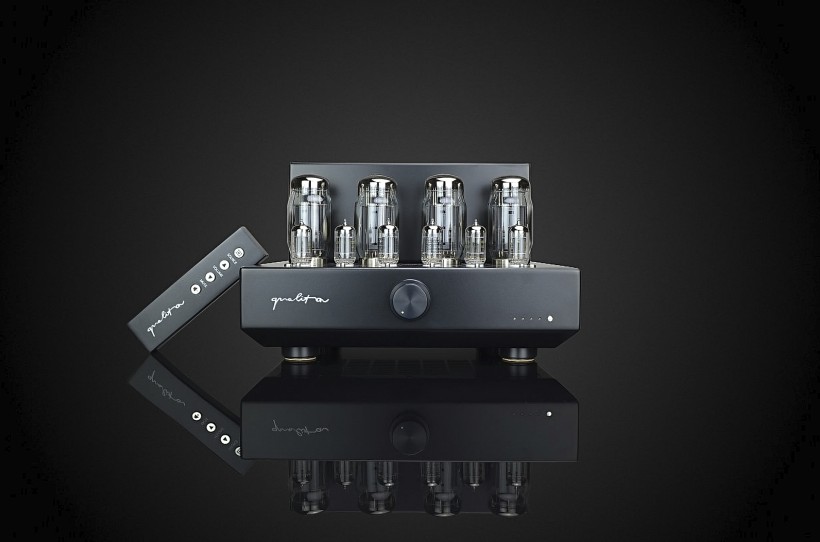
The preamplifier played during the Show as a part of the system prepared by hORNS, and it did such a great job that it came back with Lukasz to Lublin. Ever since, hORNS has presented their speakers with Audio Hungary products many times, usually supported by David Laboga Custom Audio cables, which should be familiar to our readers. As Łukasz told me, over those few years, he had a chance to use several Hungarian devices in his system, and each offered not only an objectively high-quality sound, but also one that suited him personally and, not surprisingly anymore, paired well with his speakers. An important factor that makes Audio Hungary electronics so interesting is their (relatively, obviously) attractive, although not cheap, pricing. Such a successful marriage of Audio Hungary’s tube electronics with hORNS speakers led to a permanent partnership, with Lukasz now acting as the brand’s representative for the Polish market.
Before I continue, let me add a few words about the Hungarian company, because, as you can read on their website, it’s a company with great traditions. It all started back in the 1940s when Rafilm National Radio and Film, a company working for the radio and film industry, was founded, which, after several subsequent transformations, acquisitions, and buyouts, has been known as Audio Hungary since 2015. This brand, which still exists today, bought out another of the heirs of that first company, namely Univox, which is well-known in many countries around the world. After the acquisition, however, the new owners changed the company’s profile from a manufacturer of public sound systems to a supplier of home audio equipment. The latter, as is probably clear by now, features tubes, and the company’s portfolio includes amplifiers and preamplifiers.
Today, Audio Hungary’s lineup is divided into two lines – Qualiton Classic and Qualiton A-Series. The former consists of three products – the C200 line preamplifier, the P200 power amplifier, and the X200 integrated. For this test, however, I received the most powerful representative of the Qualiton A-Series, the A75 integrated. In addition to it, the series includes two more integrated amplifiers, the A20i and A35, a Phono Preamplifier, and a step-up transformer. Despite its young age (I mean the current brand), the company already has more than a dozen distributors in Europe, Asia, and the Americas. This fact suggests that its products must have been appreciated by a variety of customers, including those from highly demanding markets. For me, in addition to Lukasz’s recommendation, the number of distributors was an additional argument for finally getting to know at least one Audio Hungary product.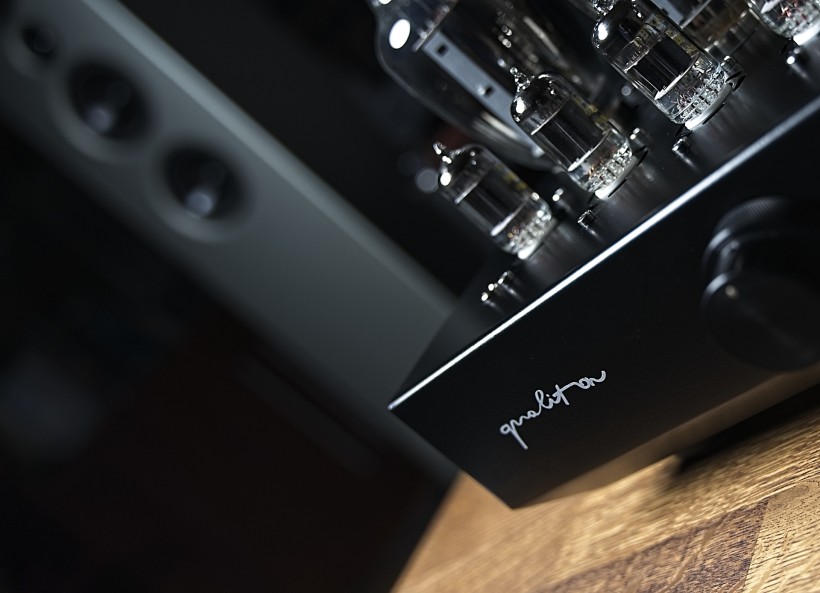
And so it happened that Łukasz Lewandowski called me a few weeks after the last Audio Video Show in Warsaw, which I did not participate in for the first time in my audiophile life due to health reasons, and offered to bring me his favorite amplifier from the Hungarian brand, the Qualiton A75, for a test. To be honest, I didn’t realize what specific model it was, or what tubes it was based on, but since I remembered how much I liked the sound in the hORNS room at every show, plus, as you probably know, I’m a big tube amplifiers aficionado, I immediately agreed.
A few days later the head of hORNS personally brought the amplifier to my place. A75, although in terms of dimensions is not particularly large, weighs quite a lot, as virtually any good tube amplifier does. The amplifier first took part in some listening sessions for another review, of the Joseph Audio Pulsar 2 Graphene speakers (see the review in Polish HERE http://hifiknights.com/recenzje/joseph-audio-pulsar-2-graphene/), and only then did I listen to it with my speakers. From the outset, it made a very good impression when supporting the excellent American stand-mount speakers, but I left the proper evaluation for later listening sessions with the MACH 4s and Ubiq Model One speakers I know very well. Before I get to the sound assessment, let me share some information about the design and its features.
Design and features
The form factor of the Audio Hungary Qualiton A75 tube integrated amplifier is quite simple, even modest. For, like the first Fords, it is all black. Black is almost square (almost, because its depth is slightly greater than its width), quite tall (with the tube cover it reaches 25 cm) chassis, but also the removable tube cover, transformers housing, single knob on the front, and even the feet. Only the small Qualiton inscription is white (can you see what they did there? – they combined quali and tone, clearly suggesting a quality/good sound) located on the front panel, and a dot on the volume control knob indicates its current position. On the front panel, you will also find a black button used to select an active input. Next to it, there are four LEDs (corresponding to the 4 analog inputs) in a row. The selected input is indicated by a white backlight, the others by red.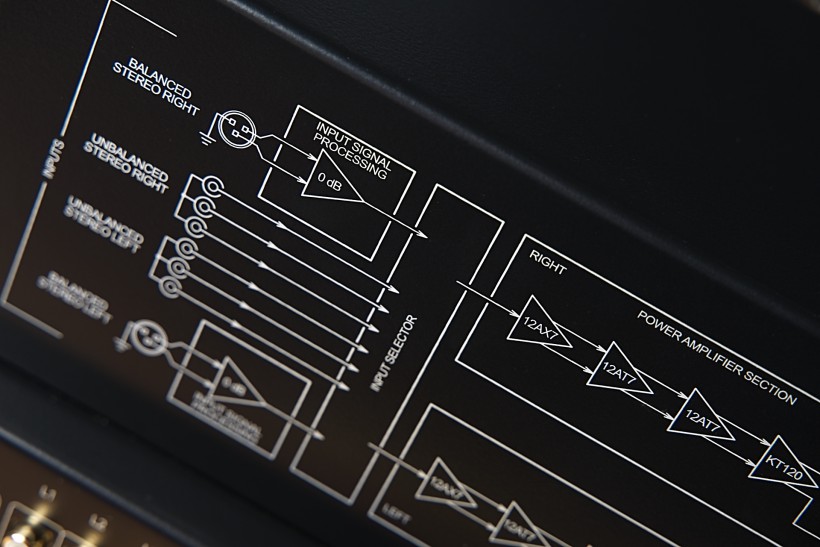
Please note that the diodes corresponding to the inputs are not described, and their layout is…. opposite to the layout of the actual inputs located on the rear panel (i.e. when looking at the amplifier from the front there is a diode on the left corresponding to the XLR input, which, still looking from the front, is located on the rightmost side, although looking from the rear it is on the left, so there is logic in such an arrangement). This is not a problem, especially since the operation (input selection, volume level, and “mute” function) can be done also with a nice remote control, but you just have to get used to it. The rear panel features the aforementioned 4 analog inputs, one of which is equipped with XLR jacks (but it is not a balanced design, so the XLRs are there only for convenience), and the others with RCAs. Next to them are solid speaker posts with separate taps for 8 and 4 Ω speakers. A standard IEC power inlet completes the set of connectors.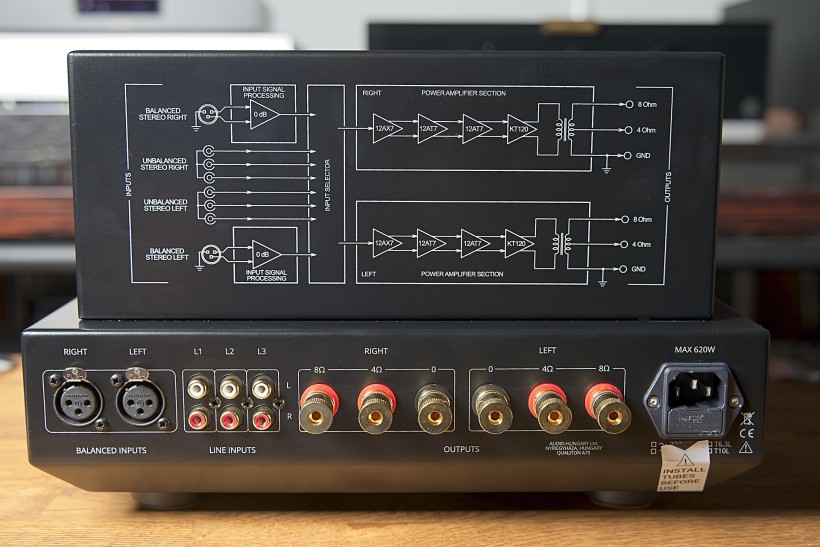
The device’s on/off switch is placed somewhat unusually, as it is not on the back or front, but on the left (looking from the front) side panel near its rear edge. After turning it on, the device needs a moment before it is ready for operation, from which I infer that probably some kind of soft-start circuit was used, whose task is to extend the tubes’ lifespan. The set includes four 12AT7 (ECC81) and two 12AX7 (ECC83) in the pre and drive stages, and four KT family power tubes in the output stage. According to the manufacturer, the latter can use a quadra (two tubes per channel) of both KT120, KT150, and KT170, depending on the user’s choice. To make things easier for users, the amplifier is equipped with an automatic bias circuit. The manufacturer does not provide any information on whether there are any, and if so what kind of, differences in terms of output depending on power tubes. The only value we get is 2x75W. With tubes from the KT family operating in push-pull mode, this means that the Qualiton A75 should comfortably drive many or even most speakers of your choice, except perhaps the most demanding ones (size of the room, and volume levels one uses are also factors to be considered).
The manufacturer doesn’t actually share any information about the design of the unit, the transformers, or other components used, and I didn’t get around to peeking under the hood, so I’ll just end the description by saying that the unit gives the impression of being solidly built and well finished. Like many manufacturers of high-end tube equipment, Audio Hungary has decided not to offer any additional modules for their integrated amp. So there is no DAC, streamer, or phono preamp on board, the presence of which is convenient for the user, but complicates the circuit and potentially introduces interference/noise that can negatively affect the sound. The best tube amplifiers are famous for simple circuits resulting in excellent sound. It seems that the Hungarian company is following in the same footsteps as giants like Kondo, Air Tight, Audio Tekne, etc. From my point of view, this is a good thing, as it increases the chance of the Qualiton A75 offering a truly high-end sound at a (relatively) attractive price. It’s time to start discovering, what the tested device has to offer in terms of sound quality and character.
Sound
The list of speakers I paired with the tested Qualiton A75, featuring KT170 tubes, to be exact, included not only my own GrandiNote MACH4 and Ubiq Audio Model One Duelund Edition but also Joseph Audio Pulsar 2 Graphene, tested at the same time. The Hungarian integrated drove all of the aforementioned models with ease, although for most of the critical listening phase, I used my trusted MACH4. Why? Because that’s how I test many if not most amplifiers, especially the tube ones. The latter simply pair best with tubes and allow them to truly shine whether driven using a few or a few dozen watts.
Having tested a lot of amplifiers with KT150 and KT170 tubes and knowing my speakers, I started the session with Prince’s “Welcome 2 America” album. This is cool, fast, funky music, which is fun to listen to even if the lyrics are not particularly optimistic. There are excellent vocals, there are strong, punchy bass, and energetic, fast drums – in a word, music, at least on the surface, that should better “fit” a solid-state amplifier than a tube one. And yet, the Qualiton A75 played this album in such a way that I found my limbs tapping the rhythm involuntarily, and my head rocking from side to side. Great PRAT (pace, rhythm, and timing) was an important feature, but equally important was the fact that the fast, powerful, quite low descending bass was never dry, or dull. On the contrary, the amplifier took care of its proper saturation, the right tonal temperature, and juicy timbre, a very delicate, but enhancing the naturalness of the sound (and the pleasure of listening) softness, and fleshiness of the lower tones. At the same time, they were saturated with a large dose of energy, and yet, which is not at all a contradiction to the natural softness and fleshiness, they remained sufficiently compact and fast, which translated into the aforementioned very good PRAT.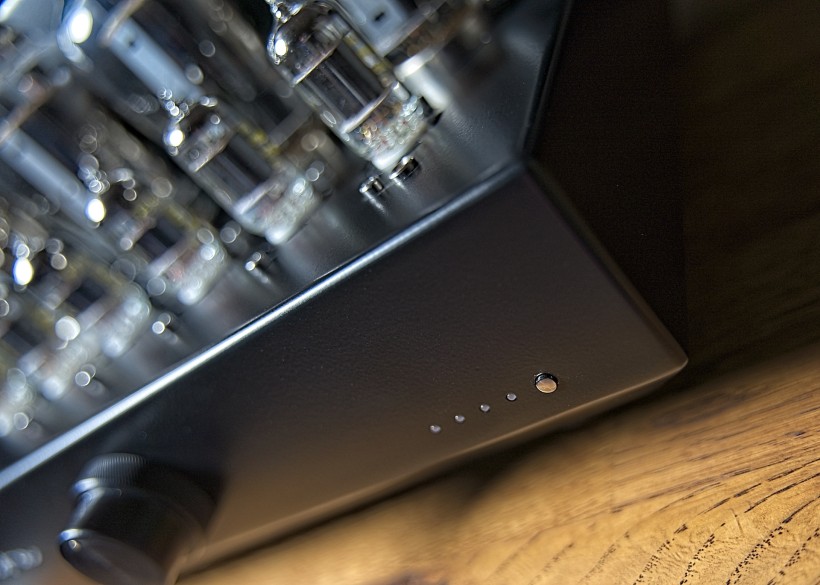
Already on this album one could hear how perfectly the Qualiton A75 combines the speed and energy of the sound with its saturation. On the one hand, the clarity and transparency of this playing were flawless, and on the other hand, the “tube-like” density and saturation were equally impressive. Large, three-dimensional phantom images were rendered by combining (not exaggerated, natural) contouring with excellent filling. The foreground was shown close, but without it being pushed out in front of the speakers. It was the density, saturation, dynamics, and high energy of the sound that made the musicians and vocalists seem close and almost tangible, which in turn made it so easy to establish close contact with them and the music, and to get immersed in the musical event.
It wasn’t quite the level of tangibility or presence that the best SET amplifiers offer, but the difference was nowhere near as great as I expected, and the impression was still highly convincing. What’s more, when paired with the Pulsar 2 Graphene stand-mounted speakers, the latter completely disappeared from the room which created a very convincing illusion of participation in the performance. With my floor-standers, this detachment of the sound from the speakers was not quite as convincing, but still good enough to, at least sometimes, make me forget that I was just listening to a recording and not participating in a live event.
This natural softness of the lower end of the band, supported by adequate weight, fill, dynamics, and beautifully rendered timbre was also perfectly clear when listening to Christian McBride’s double bass from his trio’s concert recorded at the famous Village Vanguard Club. This is not a recording made in such a way that you can hear every slide of the fingers on the strings, or an accidental tap on the instrument’s box, or other, non-musical elements, but this is what allows you to focus more on the timbre and texture, the fluidity of the playing, and the harmony of all the instruments. Qualiton A75, I should add just in case, proved to be more than adequate in delivering each of those elements of music.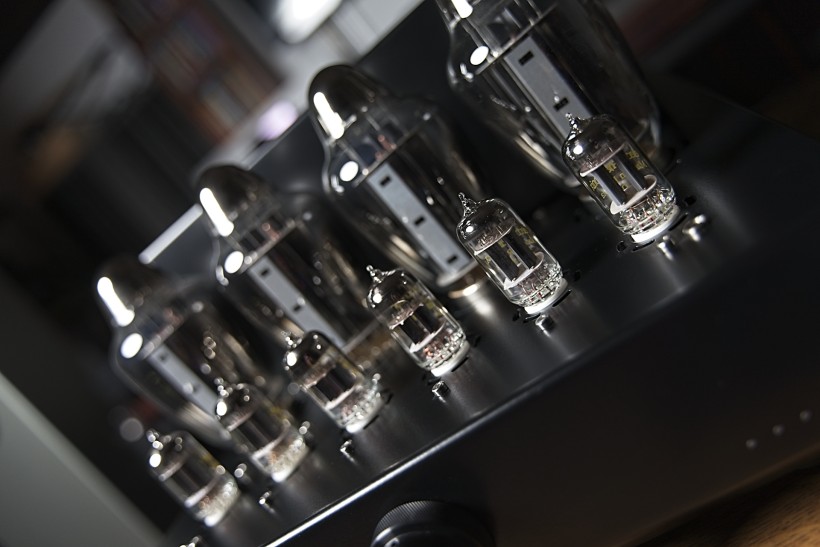
Christian Sands’ piano with this amp also seemed to sound a tad soft, but at the same time very smooth and sonorous, only that it was just a bit less “metal” than it happens on other recordings. Even the Ulysses Owens Junior’s drums presented by the Hungarian amplifier continued this (perceived) softness, or rather a certain gentleness of sound, which made the whole trio sound so well together. It didn’t prevent the powerful drums and metal cymbals from sounding almost explosive when needed, which only confirmed the versatility of the tested integrated and its ability to convey whatever was recorded on the album.
In case you don’t know this recording let me emphasize, that this is just such a production! Even though it was recorded live in a club, the latter “sounds” a bit like a heavily dampened room. The sound was apparently not recorded using closely positioned microphones, and hence all those fine non-musical details are not emphasized despite the overall high clarity of the sound and its richness in terms of purely musical details. Depending on the system/components playing this recording, this kind of production can sometimes be somewhat misinterpreted. Some sources/amplifiers, particularly rich in the midrange, make the whole thing a little too soft so that it loses its clarity. Others, those that are a bit too bright, add a glare or even sharpness to the cymbals or piano that are not there at all. The Qualiton A75 proved that it is not an amplifier that imposes its character on recordings, but rather tries to render them as faithfully as possible and deliver what had been recorded.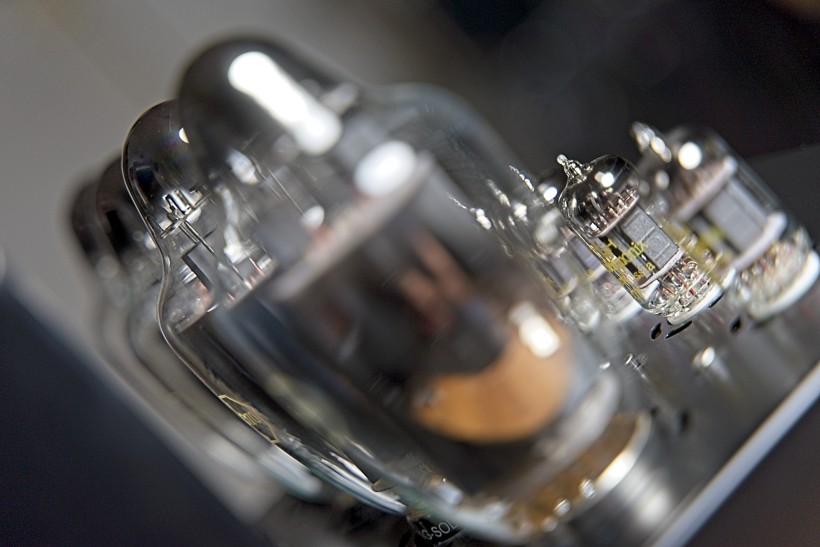
Listening to this album impressed me just as much as Prince did before, except for slightly different reasons. In both cases, what I heard was a classy, refined presentation due to a very large amount of information that built the sound, which confirmed the very good resolution and differentiation offered by the Qualiton A75. It sounded very natural, smooth, and coherent even though these were, after all, completely different recordings. So even at this stage of my assessment, the Qualiton’s amplifier earned my respect, and I listened to the music (more than the sound, or even the reviewed amplifier) with great pleasure and involvement. At times when I turned off the analytical part of my brain and let myself be swept away by the music, I would sit with a smile on my face, nodding only occasionally in acknowledgment of what was coming to me from the speakers. Since listening was such an enjoyable experience I kept adding more and more albums to the playlist, only because I wanted to find out how they would sound like with this amplifier.
When I reached for a slightly different type of production, although also a live performance, this time by the Hadouk Trio, I heard beautifully resonant, sparkling, brimming with energy, very well-differentiated cymbals, and other metal percussion instruments. At the same time, confirming once again the high fidelity approach of the Qualiton A75, it made the duduk sound exactly as it should, that is, warm and soft. This recording also better captured the acoustics of the venue, hence I could hear reverberation, and the long decay better, and it was clear the whole stage was filled with more air, which the subject of this test demonstrated convincingly, even though before, on McBride’s albums, these elements were almost absent. So it confirmed that what comes from speakers depends more on the recording and less on the amplifier’s own character.
Listening to several above-average in terms of spatial aspects recordings, I had a lot of fun (because it’s an aspect I like very much) “seeing” how well, and convincingly the large spaces were shown. This was the case, for example, on Arne Domnerus’ “Antiphone Blues”. Tracing the sounds of the saxophone and organ deflecting along the distant walls of the church, assuming the whole setup or tested components can show them, is always a unique experience, and this time was no different. For it makes one “see” a space many times larger than the listening room in front of them. The impression of participating in a concert was heightened by how well the Hungarian amplifier conveyed the power and character of the organ’s sound, even if the organ on this album plays without displaying its full power. Of course, this was best heard when A75 drove the largest Ubiq Ones, which ensured enough bass extension, and the 12-inch woofer pushed enough air so that I could almost feel the sound pressure generated by the powerful pipes, but with the MACH 4s, it was also quite impressive. The saxophone sound, clean, saturated, and full of air, in turn, emphasized very good differentiation, another of the A75’s many strengths.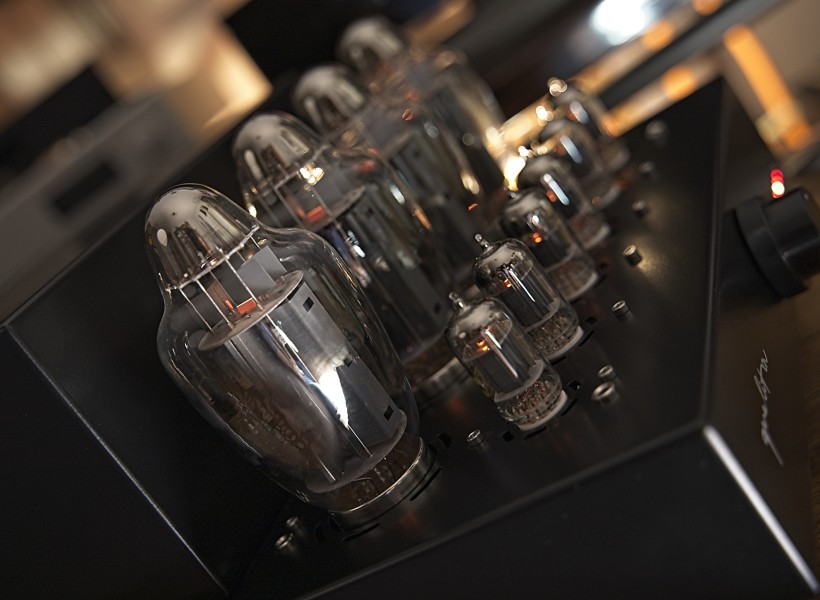 I returned to the vocals, which came out so well, for example, on the aforementioned Prince album, along with a whole series of rock and blues albums, which I left for the final stage of my Qualiton A75 assessment. I focused on them because, on the one hand, many people say that rock fans must have solid-state amplifiers, and on the other hand, I know from experience how perfectly good tube amps can play such music. The thing is, after all, that even in this music the midrange is the key to success. The aforementioned vocals, but also electric guitars, in some cases synthesizers – most of the sounds they play belong to the midrange, hence the way this part of the range is reproduced by the amplifier (or whole setup) is so important. The Hungarian integrated, although it is not a SET design, saturated and filled the colorful, fluid midrange better than most silicon-based competitors. Thanks to this feature, Slash, Joe Perry, Angus Young, or Steve Ray Vaughan’s guitars sounded powerful, “meaty”, and energetic, and when it came to solos, the Qualiton A75 played them in an effortless, precise, and at times even thrilling way.
I returned to the vocals, which came out so well, for example, on the aforementioned Prince album, along with a whole series of rock and blues albums, which I left for the final stage of my Qualiton A75 assessment. I focused on them because, on the one hand, many people say that rock fans must have solid-state amplifiers, and on the other hand, I know from experience how perfectly good tube amps can play such music. The thing is, after all, that even in this music the midrange is the key to success. The aforementioned vocals, but also electric guitars, in some cases synthesizers – most of the sounds they play belong to the midrange, hence the way this part of the range is reproduced by the amplifier (or whole setup) is so important. The Hungarian integrated, although it is not a SET design, saturated and filled the colorful, fluid midrange better than most silicon-based competitors. Thanks to this feature, Slash, Joe Perry, Angus Young, or Steve Ray Vaughan’s guitars sounded powerful, “meaty”, and energetic, and when it came to solos, the Qualiton A75 played them in an effortless, precise, and at times even thrilling way.
The vocals sounded equally good. Powerful, charismatic, appropriately “rough” (after all, most rock and blues voices are like that), and brilliantly differentiated attracted attention, invited me to sing along, and made it difficult for me to stop listening after a single track selected for the audition. Hence usually, one track turned into playing the whole album, and then another one, and another. The Hungarian amplifier, as with any other musical genre, brilliantly combined all these elements into a coherent, highly enjoyable whole despite the technical imperfections of most such recordings. Yes, despite its high-fidelity approach, Qualiton A75 is not a brutal destroyer of lesser-quality recordings. It can forgive minor problems or sloppiness of sound engineers focusing more on the music itself and the emotions associated with it. That’s why it engages the listener so easily and offers so much fun even when listening to non-audiophile albums. To put it briefly – contrary to stereotypes, a good tube amplifier, and the Qualiton A75 turned out to belong to this category, is an excellent choice not only for jazz, vocals, and small ensembles but also for rock and blues music.
Summary
This was my first encounter in my system with a Qualiton product. Although audio shows do not provide a reliable basis for a serious assessment of the presented equipment, they may still offer a hint, or a suggestion to take an interest in a given product or brand. As I mentioned earlier, each of the presentations of the hORNS speakers supported by the Hungarian brand’s amplification was (taking the show’s conditions into account) good, and sometimes even very good. Several weeks spent with the Qualiton A75 integrated in my room, paired with several high-end sources and different speakers confirmed that it is a really good, versatile tube device that breaks many stereotypes and turns listening to music into something more, into an authentic, emotional experience.
Excellent, dense, smooth midrange – check! Excellent vocals, very good resolution, and lots of information presented in a non-intrusive, consistent way – check! Above-average spatiality, ability to create the impression of the performers’ presence – check! Pure, open, full of air upper range – check! A touch soft, colorful, well-differentiated bass – check! Only that, somehow contrary to stereotypes, these features are complemented by high energy, and very good PRAT, and in the midrange there is enough intensity to deliver not only jazz but also rock and blues vocals in a so intoxicating way, so that it is impossible to stop listening to them, as well as the best electric and acoustic guitarists. The lower end may be gently rounded, but it’s still fast, tight, and well-differentiated enough to make not only the showdowns of double bass players but also bass guitarists and drummers able to raise the temperature in the room.
Equally importantly, the maximum output of the Qualiton A75 is enough to drive many, most really loudspeakers, not just the easy-to-drive ones designed for tube amps. Regardless of the choice, except for extreme designs of course, you will get with this integrated a coherent, natural, but also energetic, highly engaging presentation, which will allow you to enjoy the music no matter your preferences. In my opinion, this is what our hobby is all about. Try it out yourself – it’s worth it!
Prices (when reviewed):
- Qualiton A75: with KT120 tubes: 6900 EUR
- Qualiton A75 with KT170 tubes: 7200 EUR
Manufacturer: AUDIO HUNGARY
Distributor: hORNS
Technical specifications (according to the manufacturer):
- Power: 2 x 75 watts
- THD: < 0.1% (f = 1 kHz, nominal power)
- Frequency response: 25 Hz to 70 kHz (-3 dB, nominal power)
- XLR and RCA input sensitivity: 920 mV
- Number of inputs: 3 x RCA, 1 x XLR
- Gain: +28.5 dB (RL = 8 Ohms)
- Input impedance (XLR): 40 kΩ
- Input impedance (RCA): 10 kΩ
- Speaker outputs: 4 and 8 ohms
- S/N: > 100 dB (RL = 8 Ohms, nominal power)
- Maximum power consumption: 620 W
- Tube set: 4 x KT120 (or KT150, or KT170); 4 x 12AT7; 2 x 12AX7
- Weight: 21 kg
- Dimensions: 35 x 42 x 22 cm
Associated equipment:
- Digital source: a custom passive server with WIN10, Roon, Fidelizer Pro 7.10, JCAT NET XE, and JCAT USB XE cards with FERRUM HYPSOS Signature power supply, KECES P8 (mono) linear power supply for the server, JCAT USB Isolator
- D/A Converter: LampizatOr Pacific 2 +Ideon Audio 3R Master Time (USB signal regenerator)
- Analog front end: J.Sikora Standard MAX turntable, J.Sikora KV12 tonearm, J.Sikora KV12 MAX tonearm, AirTight PC-3, phono stages: Grandinote Celio MK IV, ESE Lab Nibiru V 5.
- Power amplifiers: GrandiNote Shinai, Circle Labs M200, Art Audio Symphony II (modified)
- Preamplifier: Circle Labs P300
- Loudspeakers: GrandiNote MACH4, Ubiq Audio Model ONE Duelund Edition.
- Interconnects: Bastanis Imperial x2, Soyaton Benchmark, Hijiri Million, Hijiri HCI-20, KBL Sound Himalaya 2 XLR, David Laboga Expression Emerald USB, David Laboga Digital Sound Wave Sapphire Ethernet
- Speaker cables: Soyaton Benchmark
- Power cables: LessLoss DFPC Signature, Gigawatt LC-3
- Power: Gigawatt PF-2 MK2 and Gigawatt PC-3 SE Evo+; a custom power line with Gigawatt LC-Y in-wall cable; Gigawatt G-044 Schuko and Furutech FT-SWS-D (R)
- Network: Silent Angel Bonn N8 + Silent Angel Forester F1 + optical LAN isolator
- Racks: Base VI, Rogoz Audio 3RP3/BBS
- Anti-vibration accessories: ROGOZ-AUDIO SMO40 and CPPB16 platforms and ROGOZ AUDIO BW40MKII feet, Franc Accessories Ceramic Disc Slim Feet and Wood Block Platform, Graphite Audio CIS-35 and IC-35


